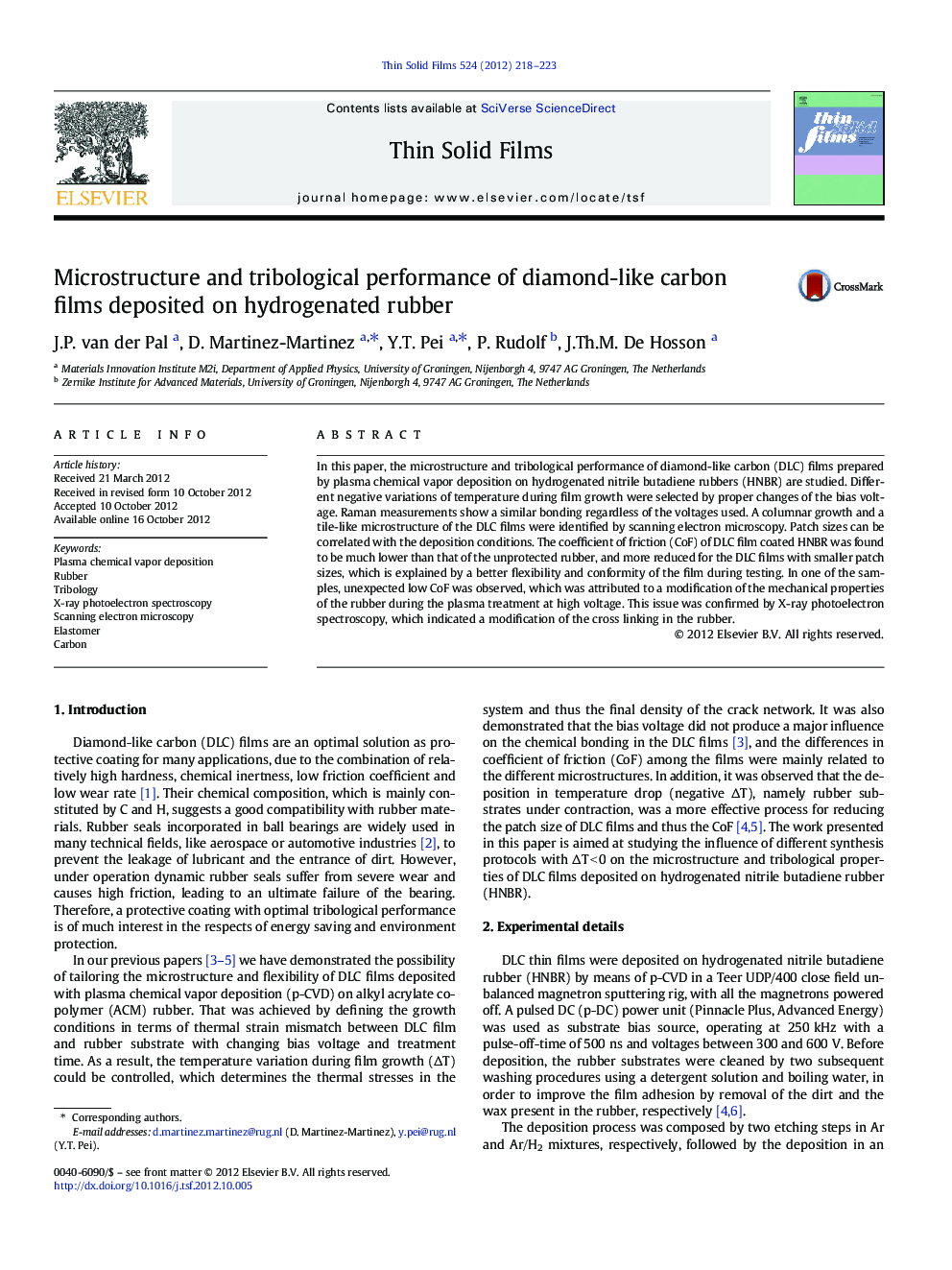| Article ID | Journal | Published Year | Pages | File Type |
|---|---|---|---|---|
| 1666581 | Thin Solid Films | 2012 | 6 Pages |
In this paper, the microstructure and tribological performance of diamond-like carbon (DLC) films prepared by plasma chemical vapor deposition on hydrogenated nitrile butadiene rubbers (HNBR) are studied. Different negative variations of temperature during film growth were selected by proper changes of the bias voltage. Raman measurements show a similar bonding regardless of the voltages used. A columnar growth and a tile-like microstructure of the DLC films were identified by scanning electron microscopy. Patch sizes can be correlated with the deposition conditions. The coefficient of friction (CoF) of DLC film coated HNBR was found to be much lower than that of the unprotected rubber, and more reduced for the DLC films with smaller patch sizes, which is explained by a better flexibility and conformity of the film during testing. In one of the samples, unexpected low CoF was observed, which was attributed to a modification of the mechanical properties of the rubber during the plasma treatment at high voltage. This issue was confirmed by X-ray photoelectron spectroscopy, which indicated a modification of the cross linking in the rubber.
► Bias voltage does not vary the chemical bonding and surface morphology of films. ► Film structure is patched, whose size depends on the etching and deposition voltages. ► The frictional behavior can be correlated with the patch size of the films. ► Surface analysis showed that rubber x-linking is modified by etching at high voltage. ► Modification of rubber x-linking leads to a different frictional behavior.
